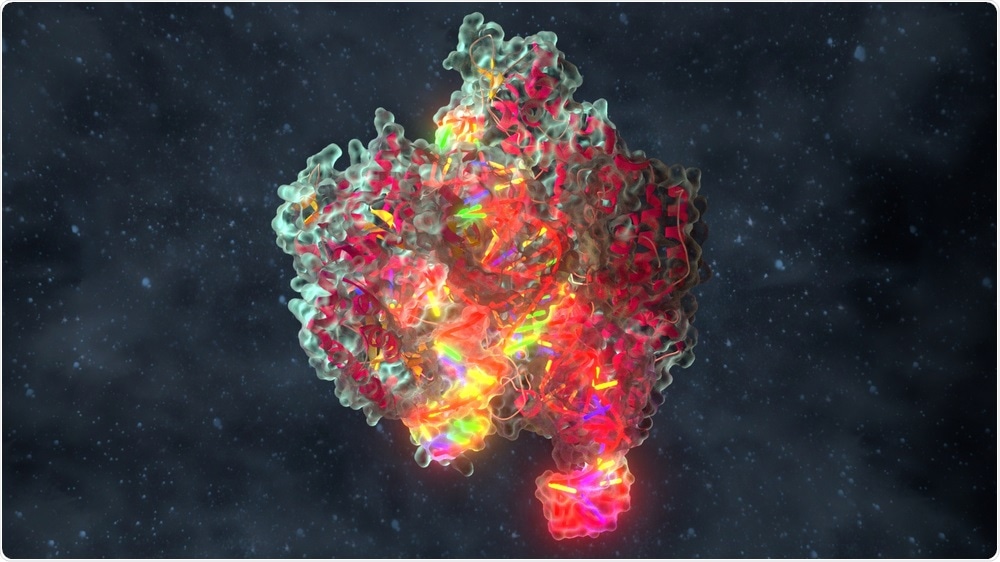Scientists at The Francis Crick Institute have discovered a simple set of rules that can be used to precisely predict how DNA will be modified by the CRISPR gene editing technique.

Alpha Tauri 3D Graphics | Shutterstock
CRISPR (Clustered Regularly Interspaced Short Palindromic Repeats) is a recently discovered gene-editing technology that utilizes the bacterial innate immune system to detect specific regions of the genome using an RNA template.
The enzyme, Cas9, is directed to the target where it cleaves the DNA, allowing specific gene sequences to be inserted, deleted, or replaced.
The DNA is broken three nucleotides from the end of the target sequence, and bits of genetic code are then inserted or deleted in a seemingly haphazard way as the cell attempts to repair the break.
The technique has revolutionized genetic engineering, making genome editing accessible to all researchers. However, the exact genetic alterations achieved were previously unknown until the gene editing had taken place.
Consequently, CRISPR could not be used for clinical applications as an outcome differing slightly from the intended could have far-reaching consequences.
In order for gene therapy to benefit from CRISPR, it is essential that DNA modifications can be reliably and precisely predicted.
Scientists at the Francis Crick Institute studied the effects of CRISPR genome editing at 1491 target sites across 450 genes in human cells.
They discovered that gene editing by CRISPR follows a set of simple rules. These rules mainly depend on the base residue occupying a particular position in the DNA region recognized by the guide RNA.
Until now, editing genes with CRISPR has involved a lot of guesswork, frustration and trial and error.
The effects of CRISPR were thought to be unpredictable and seemingly random, but by analysing hundreds of edits we were shocked to find that there are actually simple, predictable patterns behind it all.
This will fundamentally change the way we use CRISPR, allowing us to study gene function with greater precision and significantly accelerating our science."
Professor Paola Scaffidi, Lead Researcher
The team report that if the fourth base of the genetic code to be cleaved is adenosine or a thymine, there will be a very precise genetic insertion. If it is cytosine, a relatively precise deletion will occur, whereas a guanosine will cause imprecise deletions to be made. Thus, avoiding sites with a guanosine as the fourth base should make genome editing safer and more reliable.
By bearing these rules in mind when designing our guide RNAs, we can maximise the chances of getting the desired outcome of a specific gene edit - which is particularly important in a clinical context."
Dr. Anob Chakrabarti, Joint First Author
It is hoped that these simple rules for determining the precision of CRISPR in human cells will improve the efficiency and safety of genome editing in both research and clinical applications.